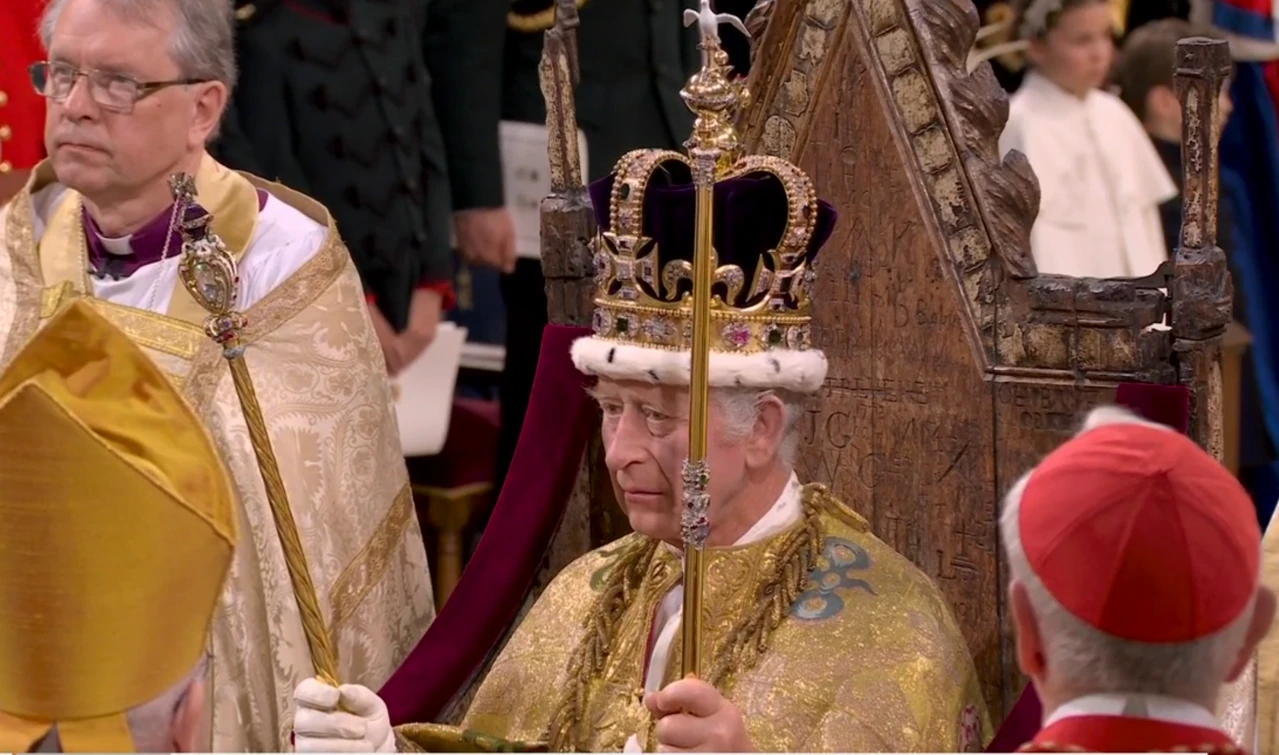The coronation service for Britain’s King Charles III and Queen Camilla is underway, a once-in-a-generation royal event that is being witnessed by hundreds of high-profile guests inside the abbey, as well as tens of thousands of well-wishers who have gathered in central London despite the rain.
The King has taken the Coronation Oath and became the first monarch to pray aloud at his coronation. In his prayer, he asked to “be a blessing” to people “of every faith and conviction.”
He was then anointed with holy oil by the Archbishop of Canterbury Justin Welby, the spiritual leader of the Anglican Church who is leading the ceremony. The anointment is considered the most sacred part of the ceremony and as such took place behind a three-sided screen.
The King was then presented with the coronation regalia, including the royal Robe and Stole, in what is known as the investiture part of the service.
He was then crowned with the 360-year-old St. Edward’s Crown, the most significant part of the coronation service. After crowning the King, Welby said: “God Save the King.”
This stage of the ceremony will be followed by enthronement and homage.
While Charles became King on the death of his mother, Queen Elizabeth II in September last year, the coronation is the formal crowning of the monarch and is a profoundly religious affair, reflecting the fact that aside from being head of state of the United Kingdom and 14 other countries, Charles is also the Supreme Governor of the Church of England.
The ceremony is following a traditional template that has stayed much the same for more than 1,000 years.
However, it has been modernized in certain key ways. The archbishop acknowledged the multiple faiths observed in the UK during the ceremony, saying the Church of England “will seek to foster an environment in which people of all faiths may live freely.”




